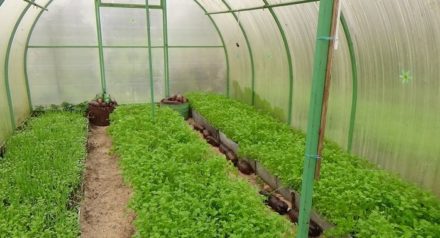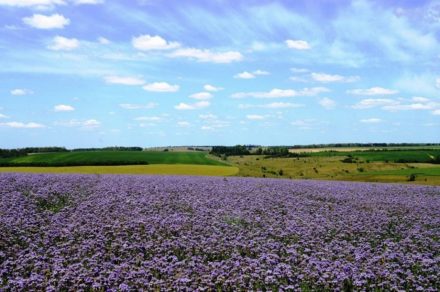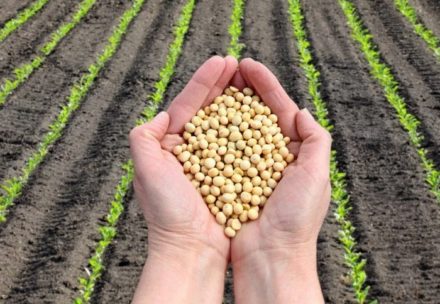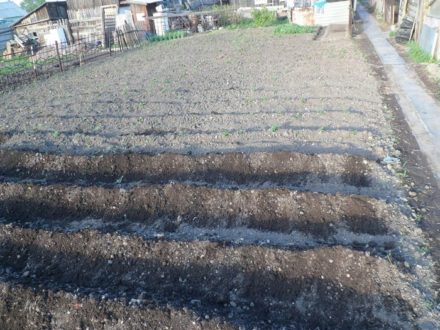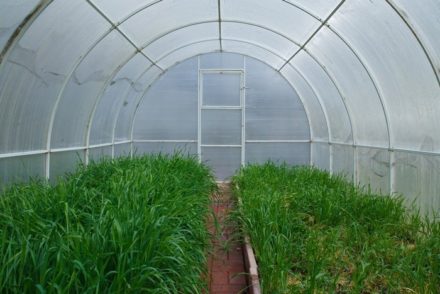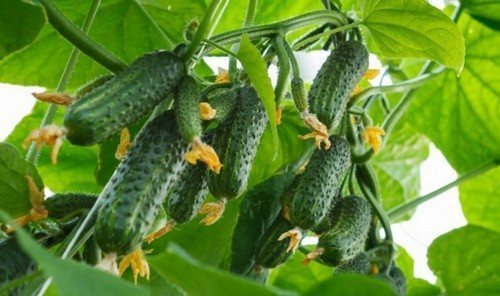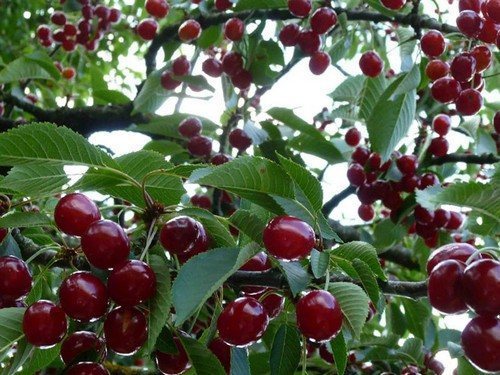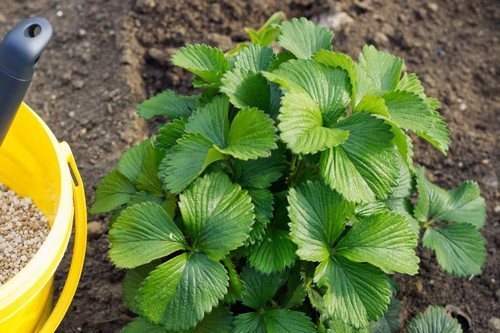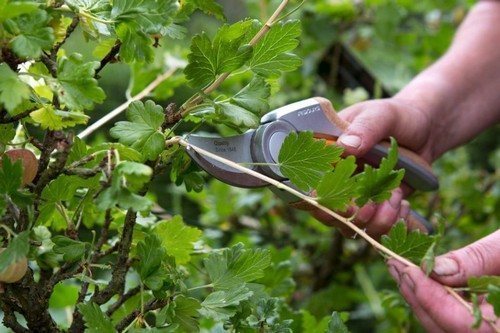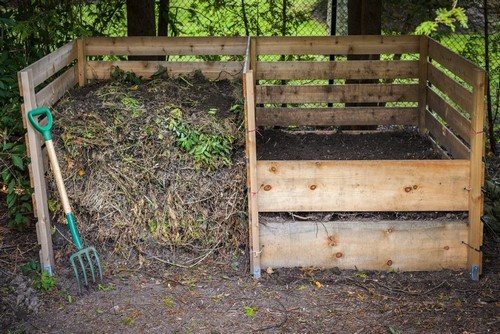Planting any crop in the same place depletes the soil and accumulates toxins. This also applies to cucumbers. The rules of agricultural technology provide for the observance of crop rotation to restore soil fertility. But in small areas or in a small greenhouse this is not always possible. In such cases, green manures come to the rescue - green spaces designed to improve soil health and replenish nutrients.
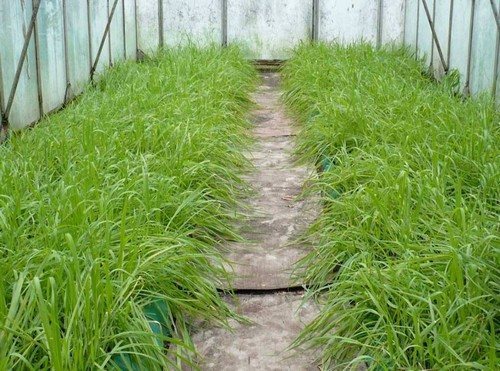
To get a good harvest of cucumbers every year, you need to know which green manure crops are suitable for cucumbers and when they need to be planted.
The benefits of green manure crops for cucumbers
The root shoots of cucumbers are small and are not able to penetrate deep into the soil to extract nutrients. Green manure comes to the rescue, delivering nitrogen, phosphorus, magnesium and other trace elements to the roots of cucumbers.
The problems that green manure solves in limited areas of greenhouses and in small areas include:
- restoration of soil fertility;
- improvement of soil structure;
- loosening and improving aeration;
- reducing soil acidity;
- pest control;
- increasing moisture permeability.
When planting green manure between the rows, the active growth of weeds is inhibited, and the foliage of industrial plants protects the cucumber plantings from weathering and overheating. Honey-bearing green manure attracts beneficial insects that pollinate cucumbers.
Green industrial crops can be used as fertilizer for foliar feeding of cucumbers.
Familiarity with the characteristics of specific crops will help you get the maximum benefit from planting green manure plants.
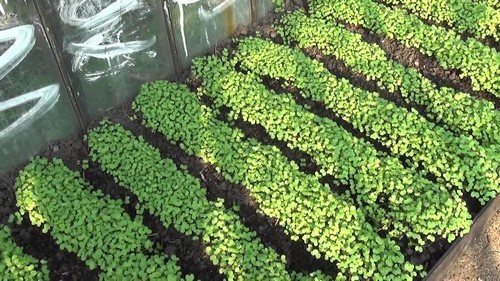
Types of cucumber green manure
There is no one universal green manure plant for cucumbers. Each culture performs its own functions.
Cereals, legumes, and cruciferous crops provide particular benefits to cucumbers:
- mustard – helps destroy slugs and codling moths, inhibits the growth of weeds;
- radish – increases the yield of cucumbers, prevents the development of infectious and fungal diseases;
- oats – saturates the soil with micronutrients;
- legumes (peas, beans, chickpeas) – replenish nitrogen deficiency;
- clover, lupine – increase breathability;
- rapeseed, rapeseed - inhibit the proliferation of weeds.
The choice of industrial crop also depends on the specifics of the soil.
Depleted, nitrogen-deficient soil will be enriched with fodder peas, clover, and lupine. To improve the structure of dense, heavy soils, oats are planted, and for flooded damp areas - any cereal crop. Increases the fertility of sandy soils by planting lupine and phacelia.
Oilseed radish, calendula, and mustard will help improve the health of soil affected by pests and diseases. Fertilizes the soil, replacing organic matter - phacelia.
To achieve a more effective effect, they practice mixing cultures. Joint planting of oats and peas or a mixture of spring vetch and oats replenish the soil with nitrogen, phosphorus and potassium, cleanse it of pathogenic microorganisms, turning it into black soil.
Experienced gardeners alternate sowing different crops during the season: in early spring, cruciferous crops are planted for digging, in the summer months legumes are placed between cucumber beds, and winter crops are sown in the fall.
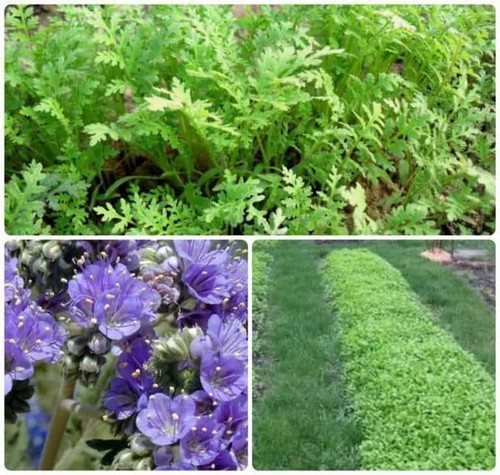
Seasonal greening of cucumbers
During the entire growing season, cucumbers require a certain amount of nutrients. In spring, cucumbers need nitrogen and phosphorus. During flowering and fruit formation, cucumber bushes consume a lot of potassium. By this moment, all the necessary microelements should have already entered the soil. Therefore, cucumber green manure is planted in autumn or spring.
Autumn green manure
In autumn, green manure is sown after fruiting and harvesting. To do this, choose crops that are resistant to cold.
Autumn sowing can be done twice:
- at the end of August after harvest;
- at the end of September - beginning of October.
For the first sowing, green manures with a short growing season are selected. They quickly grow green mass. This makes it possible to mow them and dig them up with soil before the onset of cold weather or put them in a compost heap. The roots remaining in the ground will rot over the winter, saturating the soil with nutrients.
The best plants for autumn green manure are:
- White mustard: prevents pests. The sprouts are mowed before flowering and left on the site. Rotted green mass retains moisture in the soil and makes it loose.
- Oilseed radish: quickly grows the above-ground part, improves the health of the soil, and helps increase soil fertility.
- Phacelia: grows even at temperatures +5-+8 WithC and manages to increase volume before the onset of the first frosts.
During secondary sowing, the area is sown with winter crops. Low temperatures and shortened daylight hours do not allow the above-ground parts of plants to quickly gain growth. But they manage to grow a powerful root system. Thanks to this, green manure plants retain snow cover on the site, providing the soil with additional moisture in the spring. In addition, autumn green manure eliminates the need to loosen the area in the spring, since this will be done by the long roots of green manure.
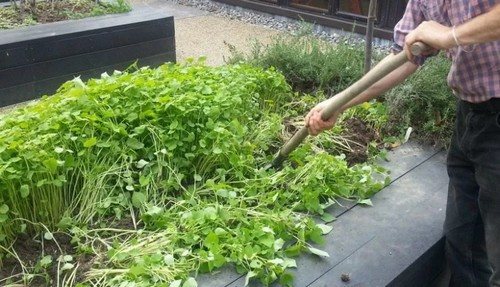
Spring green manure
In spring, green manure crops are planted immediately after the snow melts, several weeks before planting cucumbers.
In early spring (March) it is recommended to plant cold-resistant plants: phacelia, mustard, rapeseed, lupine. These crops are able to withstand soil temperatures of -5-7OC. At the end of March - beginning of April, oilseed radish and oats are planted, and in April-May - alfalfa.
Cucumber greening can be done in one of three ways:
- Dig up the green part of the green manure together with the soil before planting the cucumbers.
- Mow the ground part of green manure plants and use it as mulch when planting cucumber seedlings.
- Sow cucumber seeds between overgrown green manure plants. Sprouts of technical plants will protect cucumber seedlings from wind and direct sunlight. After the cucumber seedlings have grown stronger, green manure is cut off and covered with them between the rows of the main crop.
Spring green manure helps to obtain green mass for compost formation. In addition, spring planting suppresses weed growth and retains moisture in the soil.
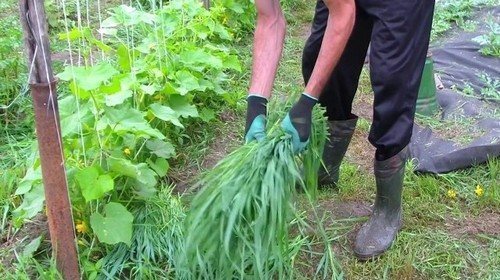
Agricultural technology for growing green manure
The greening of cucumbers depends on the place where the crop is planted.
When planting green manure under cucumbers in open ground, choose plants that can withstand low temperatures. After sowing the seeds, the beds are covered with film or sprinkled with mulch. This helps the seeds sprout faster and protects them from bird attacks. After emergence of seedlings, the covering material is removed.
As soon as the plant reaches a height of 10-15 cm, holes are made in which cucumbers are sown. Each hole is covered with a plastic bottle, which is removed after the first cucumber sprouts appear.
In open ground, the role of green manure is not only to renew the soil and saturate it with useful substances, but also to protect cucumbers from adverse weather conditions and suppress the growth of weeds.
The time for planting green manure in a greenhouse depends on its design. In film greenhouses, sowing is carried out in March. Polycarbonate structures allow plants to be planted earlier - at the end of February. It is recommended to use mustard, legumes, and watercress as greenhouse green manure in spring. In the fall, sunflower, alfalfa, and sweet clover are suitable for the greenhouse.
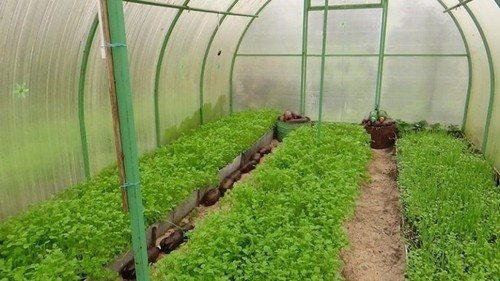
Green manure is sown in two ways. In the first method, grooves are made along the length of the bed, into which the seeds of industrial crops are densely sown. Then they are covered with soil and watered.
In the second case, the seeds are simply scattered over the area, embedded in the ground with a rake, sprinkled with compost on top and watered abundantly.
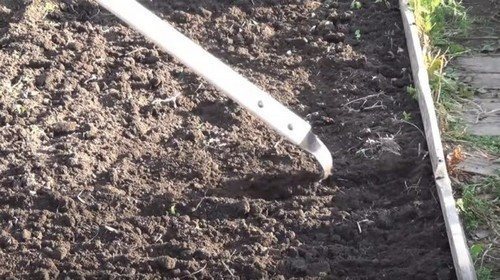
By choosing the right green manure crops, you can harvest a good harvest of cucumbers every year. Green fertilizer will renew the soil, saturate it with micronutrients and eliminate diseases.


